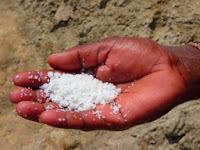Although kale has been cultivated for more than 2,000 years, American cooks seem to just now be taking it seriously as something more than a garnish. It's a good thing they are, because kale has the health advantages of a cruciferous vegetable in lowering cancer risk, and it's also an excellent source of vitamins A, C, and K and a very good source of fiber, potassium, and calcium. Kale is a member of the cabbage family and has a cabbagelike flavor. It thrives in cold climates and is in season in the winter months, although it is available year-round and can be grown in warmer climes as well. Kale leaves are long and frilly, with a tough center stalk, and can vary in color and texture (see varieties below). Kale can be used similarly to spinach. The kale chips below are trendy and fun to eat, but also try kale boiled, sauteed kale recipes, and slow-simmered.
Types of Kale
The three main types available in the United States are:
- Curly kale: Ruffled leaves, fibrous stalk, and deep green color with the most pungent flavor of these three varieties.
- Ornamental kale: Mellower flavor and more tender leaves than curly kale. The leaves can be green, white, or purple. Also called salad savoy.
- Dinosaur kale: Dark bluish-green leaves on lighter stalks with pronounced texture and a slightly sweeter taste than curly kale. Also called Lacinato or Tuscan kale.
Selecting and Storing Kale
- Opt for crisp, tender leaves that are richly colored and stems that are moist and fresh-looking. Avoid wilted or yellow leaves.
- Smaller leaves will be more tender and have a milder flavor than large leaves
- Store unwashed kale in a plastic storage bag for up to three days in the refrigerator. The longer you store kale, the stronger and more bitter the flavor becomes.
How to Prep and Clean Kale
- For large leaves, cut away the center stalk. You can cut away just the base for smaller, more tender leaves. Trim any bruised leaves.
- Wash thoroughly in cold water several times, and drain well on paper towels or spin in a salad spinner. This washing step is key because kale can be gritty if not washed well.
- Tear into pieces; 12 ounces kale equals about 12 cups torn or chopped, or four servings.
How to Cook Kale
How to Boil Kale
In a large saucepan bring a small amount of water (about 2 cups) and a little salt (1/8 to 1/4 teaspoon) to boiling. Add 12 ounces torn kale. Return to boiling. Reduce the heat and simmer for 20 to 25 minutes or until tender. Drain.
How to Saute Kale
In a large skillet heat 4 teaspoons olive oil. Add 12 ounces torn dinosaur or curly kale. Cook, covered, for 1 minute. Uncover and cook and stir for 1 minute more or just until wilted. If desired, season with salt and pepper and a squeeze of lemon juice.
How to Slow-Simmer Kale
This makes a potful and will serve 8 to 10 plus leftovers. If you prefer, for a meatless option, omit the ham hocks and use vegetable stock; you might want to increase the seasonings.
- In a large deep pot heat 3 tablespoons olive oil over medium heat. Thinly sliced 1 medium onion. Peel 2 cloves garlic and smash them using the side of a knife. Add the onion and garlic to the hot oil, stirring to coat. Add 2 large ham hocks (about 1-1/2 pounds) and 2 bay leaves. Cook about 10 minutes or until the onions are softened.
- Meanwhile, starting with 5 bunches kale, stack a few leaves at a time and cut crosswise into ribbons. Add the kale to the pot, pushing the leaves down to pack them in. Add 3 quarts reduced-sodium chicken broth, 1/4 cup apple cider vinegar, 1 tablespoon sugar, and 1 teaspoon red pepper flakes.
- Bring the mixture to boiling. Cook for 10 minutes or until the greens start to wilt, then turn the greens over with a wooden spoon and reduce the heat to simmering. Cover and simmer for 45 minutes. Season the broth with salt to taste. Cover and cook for 10 minutes more. Remove the bay leaves and serve.
Kale Chips Recipe
Preheat oven to 300 degrees F. Line a large baking sheet with parchment paper. Place 2 cups torn kale leaves on the prepared baking sheet. Brush with 1 tablespoon olive oil and sprinkle with 1/4 teaspoon salt. Bake for 20 to 25 minutes or until crisp.
Lisa Holderness Brown






